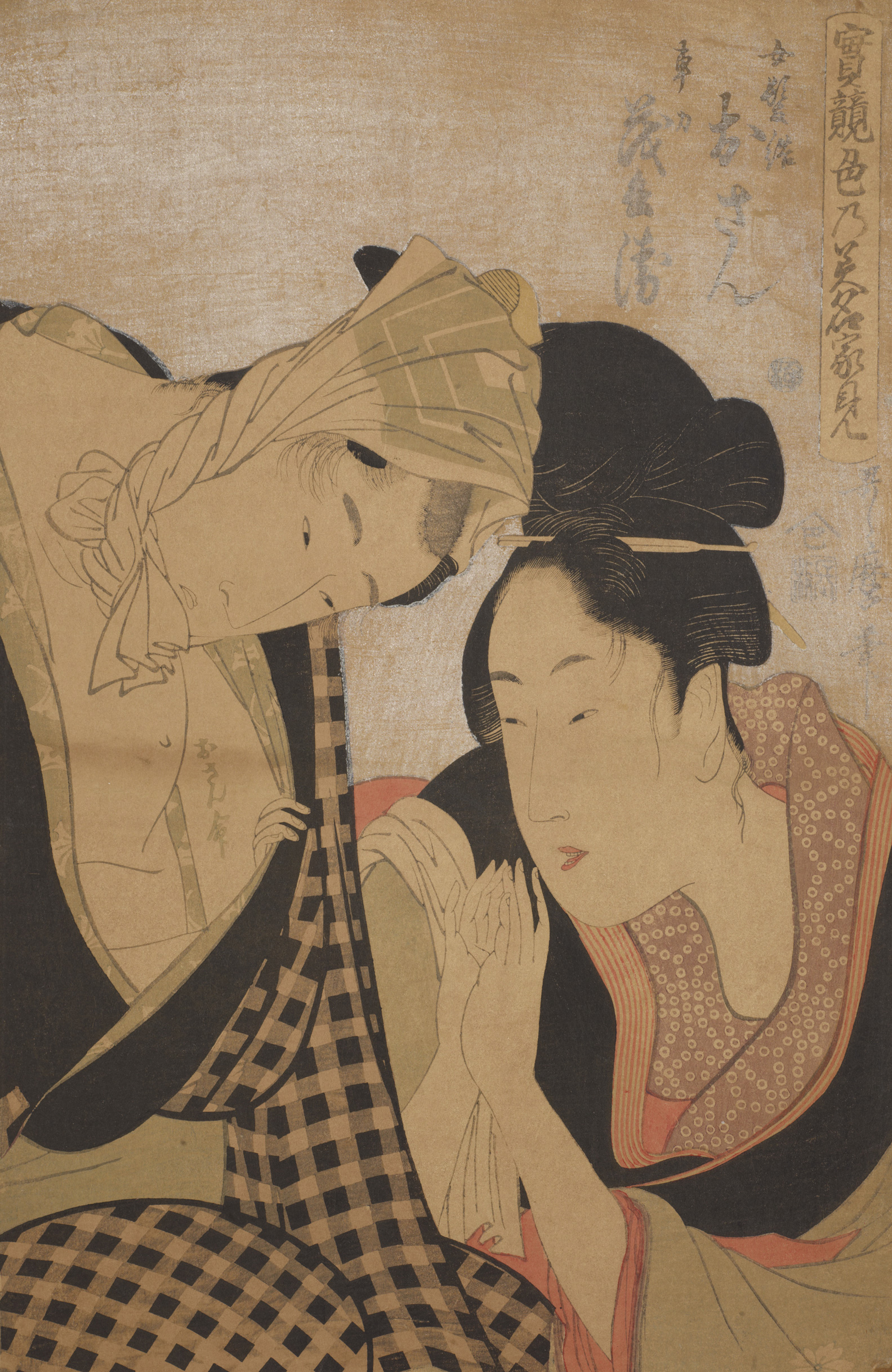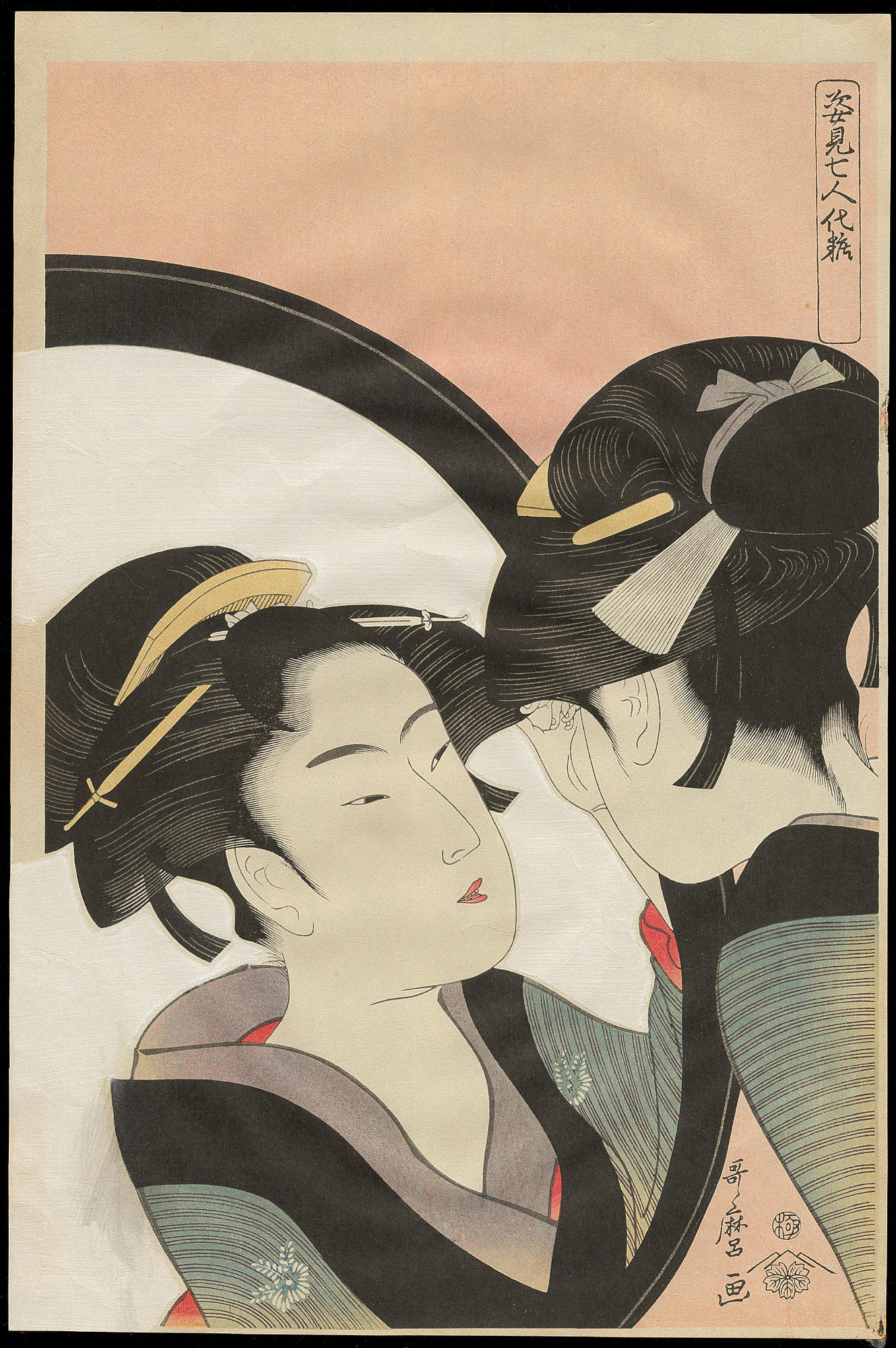First of all — Happy Valentines:)
Today we would like to present a Japanese print from the National Museum in Krakow. From today until May 3rd it will be exhibited in: "ONNA - Beauty, Strength, Ecstasy".
Another print in Utamaro’s series of twenty-one portraits of couples who became famous — through legends and literature — for the power of their mutual devotion.
The two young people looking at the name “Osan” tattooed on the man’s arm are the protagonists of Chikamatsu Monzaemon’s drama Koi Hakke Hashiragoyomi (The Almanac of Love). The play, which enjoyed an enduring popularity, was the subject of numerous adaptations and, over time, came to be markedly different from the original version from the years 1705–1714.
The initial premise that Osan and Mohei were not lovers but victims of an unfortunate chain of events, seemed to give way to the demand for love stories that ended violently. The intimacy of the characters portrayed by Utamaro is a departure from the original plot, in which the young shop assistant Mohei, loyal to his employer and respectful to his wife Osan, quite accidentally found himself next to her on a bed. Things got further complicated when, in addition to the false charge of adultery, they were accused of forging a cheque and had to flee. Their tragedy fascinated the public so much that three different endings to the story were created. In the classic version, Osan and Mohei were apprehended, but they avoided punishment thanks to the magnanimity of a certain priest who took them into his monastery. Another version ended with the execution of the hapless couple. In the third, and equally bloody, finale they committed suicide after paying their debts.
text: Beata Romanowicz


 Kitagawa Utamaro
Kitagawa Utamaro